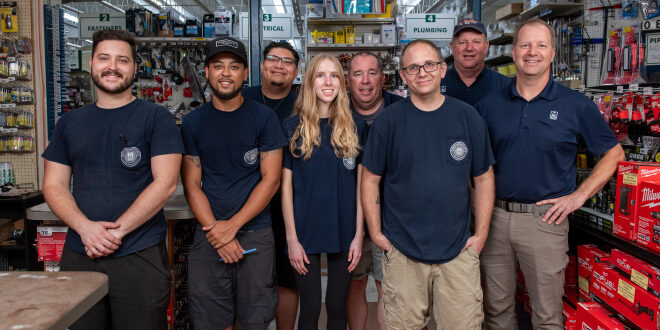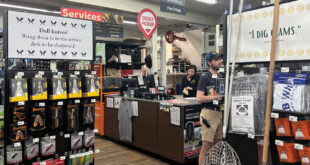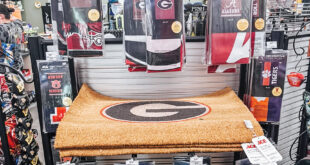Imagine you’re 13 years old at summer camp, eagerly waiting on the dock in front of a line of row boats. You and five other campers scramble into the first boat. You’re sitting up front, ready to lead the way to the other side of the lake. As you go along your journey, you realize it’s becoming difficult to steer the boat in one direction. You peer over your shoulder and discover only one other camper is helping you paddle. Three campers in the middle are recording TikToks and the one in the back is actively rowing backward and complaining about how hard the work is.
“Aren’t you going to help?” you ask the three in the middle. They shrug and each start rowing an oar, but in opposite directions, making no difference in your progress. If this scenario reminds you of people in your business, you’re not alone.
According to Gallup’s Annual Employee Engagement in the U.S. Report, only 34% of U.S. employees are engaged with their jobs. All other employees are either not engaged or actively disengaged. Think back to rowing the boat at summer camp. You and another camper are rowing the boat forward across the lake to get to the other side. The two of you are engaged and working towards the goal.
The three people on their phones and not rowing in the same direction are not engaged—they are just there to say they were there. These three in the middle represent 52% of the U.S. workforce. Finally, the person in the back rowing in the wrong direction and being more of a hindrance than a help is actively disengaged. They aren’t moving towards the goal but are instead actively moving away from it, bringing the whole team down. Actively disengaged employees make up the remaining 17% of the U.S. workforce.
Comparing today’s employee engagement to peak levels, which reached 37% in 2020, current engagement is down three points with projected engagement numbers to continue in a downward trend, according to the Gallup report. Hardware Retailing talked to three retailers who are working to change the tide in their operations. Apply their strategies to your own operation to keep your boat from sinking and improve accountability, increase communication and promote positive employee engagement.
Building Accountability
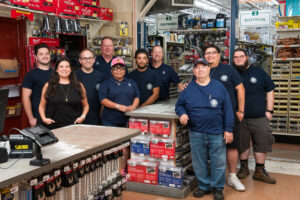 Centrally located in metro New Orleans, Louisiana, Mike’s Hardware & Supply was built from the ground up in 1981. Current owners and brothers Lee and Rob LaFleur purchased the business from their parents in 2012.
Centrally located in metro New Orleans, Louisiana, Mike’s Hardware & Supply was built from the ground up in 1981. Current owners and brothers Lee and Rob LaFleur purchased the business from their parents in 2012.
“We grew up in the store, living in the apartment upstairs for eight years while our parents got the business up and running,” Lee says. “Rob and I began considering taking over the business after working at the store most of our adult lives and purchased it in 2012. We own and operate the business, but our parents still own the building.”
Lee reached out to the North American Hardware and Paint Association (NHPA) to contribute information to the annual Cost of Doing Business Study and discovered the association’s broad spectrum of organizational development programs. Rob reached out to Kim Peffley, NHPA’s director organizational development and consulting, to learn more.
“The intention wasn’t to go looking for development programs, but after talking to Kim, we decided to bring her to our store to have an outside voice that could see things from a different perspective and help us grow even more,” Rob says.
After a few phone calls with Peffley, the brothers knew they wanted to create more structure and a sense of accountability for their employees, along with improving workflow and best practices. The brothers chose TeamBuilder, a three-month program designed to strengthen teams, define company values and create best practices to fit the company’s goals.
“We want our staff to be happy and comfortable with their positions in the store. To do that, we started by creating an org chart to show how the business operated, share who reported to whom and define the tasks and goals for each position,” Lee says. “Letting staff members know we’ve invested in resources to keep everyone accountable has made them feel more involved with the business.”
The LaFleurs also worked with Peffley to implement a web-based workplace task management tool that allowed management and staff to map out the necessary tasks and projects to be assigned to the appropriate staff on a daily, weekly and monthly basis.
“There are always those who may be reluctant to follow through with the change, and since we have partnered with NHPA and Kim, we have seen less of that reluctance and more buy-in from our staff,” Rob says. “Our crew is enjoying the changes, and we have seen improvements across the board.”
Clear Cut Communication
 Another key component for encouraging higher levels of employee engagement is effective communication. Established over a century ago, Hirshfield’s has been supplying communities in Minnesota and the surrounding states with paint, sundries, window treatments and wallcoverings.
Another key component for encouraging higher levels of employee engagement is effective communication. Established over a century ago, Hirshfield’s has been supplying communities in Minnesota and the surrounding states with paint, sundries, window treatments and wallcoverings.
Decor division manager Shannon Scarrella says the operation’s communications strategy is well established, but it had become stale and ineffective in several crucial areas. Hirshfield’s managers and sales directors began revamping their internal communication system by taking a communication test to explore the ways staff receive and share information among different personality types.
Scarrella, along with Corey Sellman, paint and sundries department manager, took communication and personality tests before they met Peffley at an ALLPRO event.
“We both knew we needed to hire Kim after seeing her presentation,” Sellman says.
Following conversations with Hirshfield’s leadership team, Peffley customized an organizational development program with a key focus on communication. The main goal of the refreshed communication strategy was to share with employees the “why” of the business.
Explaining the why means elaborating on the reasons a change aligns with the company’s core values or contributes to the operation’s culture. Scarrella and Sellman began opening up additional lines of communication and encouraging conversations not only between department heads and managers, but also managers and employees.
“When we revamped and reintroduced our core values, we made sure to explain why the company made these changes to better align with goals and culture,” Scarrella says. “Explaining the ‘why’ of each action encourages inclusion and gives employees a sense of empowerment and responsibility. We have seen a positive impact from this approach.”
Fostering a sense of control and ownership in employees and being clear on upcoming changes encourages engagement.
“When employees are involved in decisions and have access to information, they feel important to the business,” Sellman says.
Empowering Employees
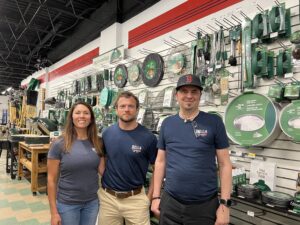 Sean and Allison Ploskina, current owners of Bill’s True Value in Arlington, Virginia, came into the business a bit unexpectedly. Sean’s father, the original owner of Bill’s True Value, died at the beginning of 2021, transitioning store ownership to Sean and his wife Allison.
Sean and Allison Ploskina, current owners of Bill’s True Value in Arlington, Virginia, came into the business a bit unexpectedly. Sean’s father, the original owner of Bill’s True Value, died at the beginning of 2021, transitioning store ownership to Sean and his wife Allison.
“After my father passed away and we took over the store, we were a bit overwhelmed with everything,” Sean says. “It was a whole new industry for us. I come from fire and rescue and Allison comes from pharmaceutical sales. There was a huge learning curve for both of us.”
There was another major challenge the Ploskinas faced when taking ownership of Bill’s True Value—the couple lived over four hours away.
“I was having trouble figuring out the best way to manage our team remotely. I’m not in the store every day, so it was hard for us to track employee accountability on a daily basis,” Sean says. “So the questions became, ‘How do we hold employees accountable?’ and ‘How do we empower them but also make sure tasks are completed and customers’ needs are met?’”
In 2022, the Ploskinas attended an employee engagement presentation from Peffley at the Fall True Value Reunion. Following the presentation and a discussion with Peffley, the couple signed up for Vision Process. Vision Process is a yearlong program designed to strengthen teams, define core values and create best practices to fit each business’s unique goals.
Because the Ploskinas lived remotely, there was an added goal of creating a digital accountability system where everyone could check and verify tasks were completed. The program aligned with their goal to develop leadership skills in their current employees and encourage a sense of ownership within the staff.
The team at Bill’s True Value started their Vision Process journey by taking the Everything DiSC® assessments, which help define different communication types and the ways each type shares and receives information.
“DiSC was eye opening. I could see how I would explain something one way and another employee would interpret it a different way,” Sean says. “With the results from DiSC, we were able to communicate more efficiently with one another to make sure we were all on the same page when it comes to moving the business forward.”
In order to create a solid communication path, the Ploskinas worked with Peffley to introduce a web-based teamwork project management software. This system simplified the process of creating daily checklists, goal tracking and sharing sales figures, and it allowed employees to easily show progress on tasks.
Once the program was in place and all employees were trained on how to complete their tasks, the Ploskinas moved on to improving key performance metrics.
“We were considering alternative options for effective management of the store because we needed to drive overall growth,” Sean says. “My father had never been one to delegate, so when he passed, many day-to-day operations had to evolve to make sure the company remained profitable.”
The couple began assigning roles to various employees to make sure the store would run smoothly.
“Since then, employees are seeing our key metrics improve and the number of customers increase because they have become more involved with the business and can keep the store moving forward,” Sean says. “They are empowered.”
Encouraging empowerment also improved the overall operations of the business.
“Because we live over four hours away, we rely on the manager and shift supervisors to be in constant communication with us at all times,” Allison says. “They can delegate necessary tasks and projects, and the team is empowered to take charge in a specific section of the store and make it their own.”
Letting employees know they have the support of the leadership and the flexibility to take ownership has helped the team at Bill’s True Value create a better work environment for themselves and a better shopping experience for customers.
The Ploskinas offer bonuses to all employees when they increase sales or receive five-star reviews. If a review lists specific employees, they receive an additional bonus, encouraging employees to remain engaged.
“You can see it in our bottom line, our customer feedback and increased ticket sales,” Sean says. “Employees can see it too and can be proud of the work they have done to make the store a profitable and engaging place to work.”
 Hardware Retailing The Industry's Source for Insights and Information
Hardware Retailing The Industry's Source for Insights and Information



